We are big fans of deep pipe irrigation (irrigation method #1). Another system we have been experimenting with in our ongoing pursuit of water efficient gardening is wicking beds.
A wicking bed is a garden bed with a waterproof lining that holds a reservoir of water at the bottom. Water is drawn upwards through the soil towards the surface of the bed through capillary action or ‘wicking’. Basically, it works like a large Decor self-watering pot.
We wanted to be growing a lot of produce, so the beds needed to be quite large. We had originally planned to build rockbeds, but thankfully we came to our senses and used some bamboo slatted screens which we purchased from a closed-down poultry farm.
Step 1
We cleared and levelled the area for the wicking bed.
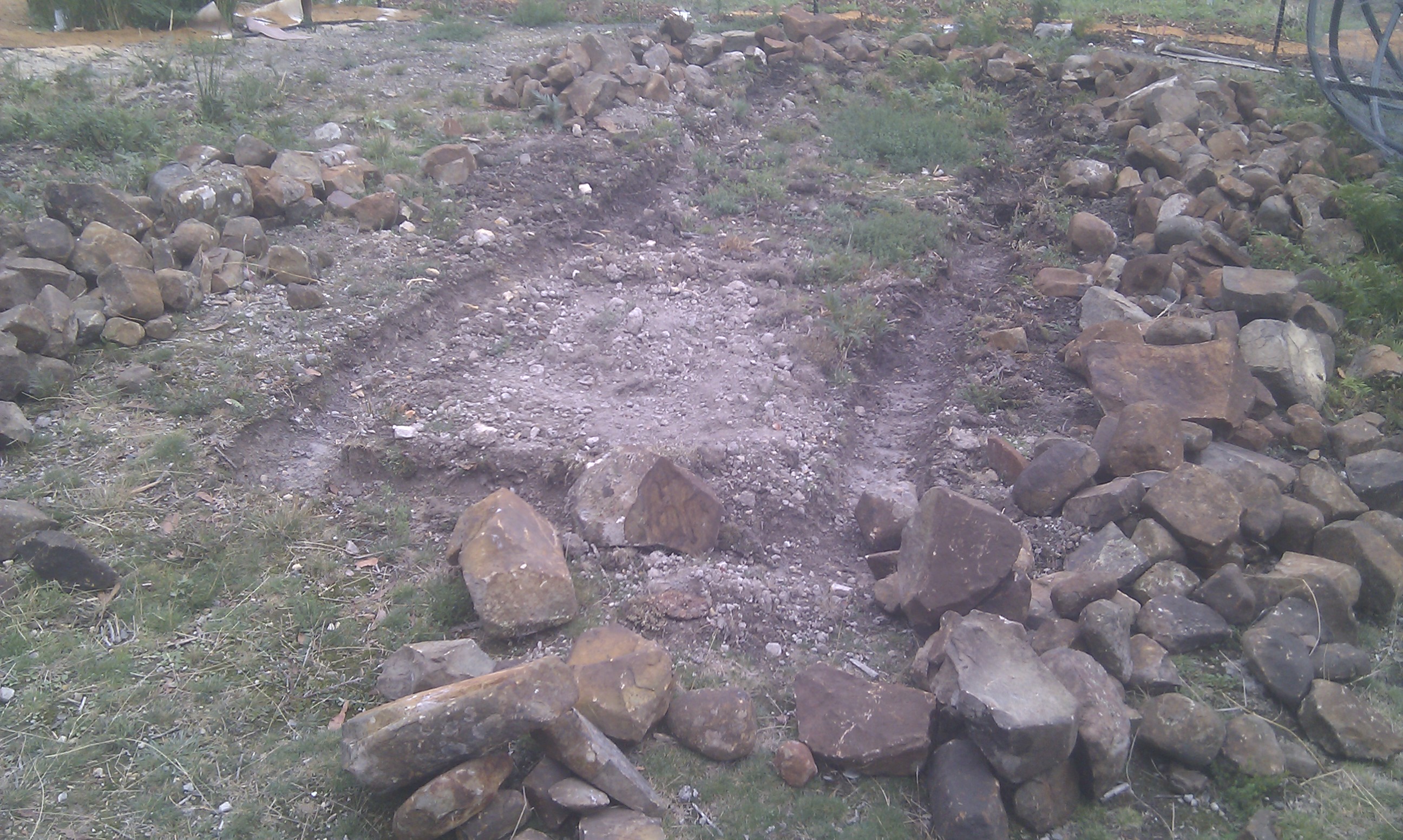
Step 2
We built our ‘pot’ with bamboo slatted screens. This was NOT a good choice. See below- What We Would Change.
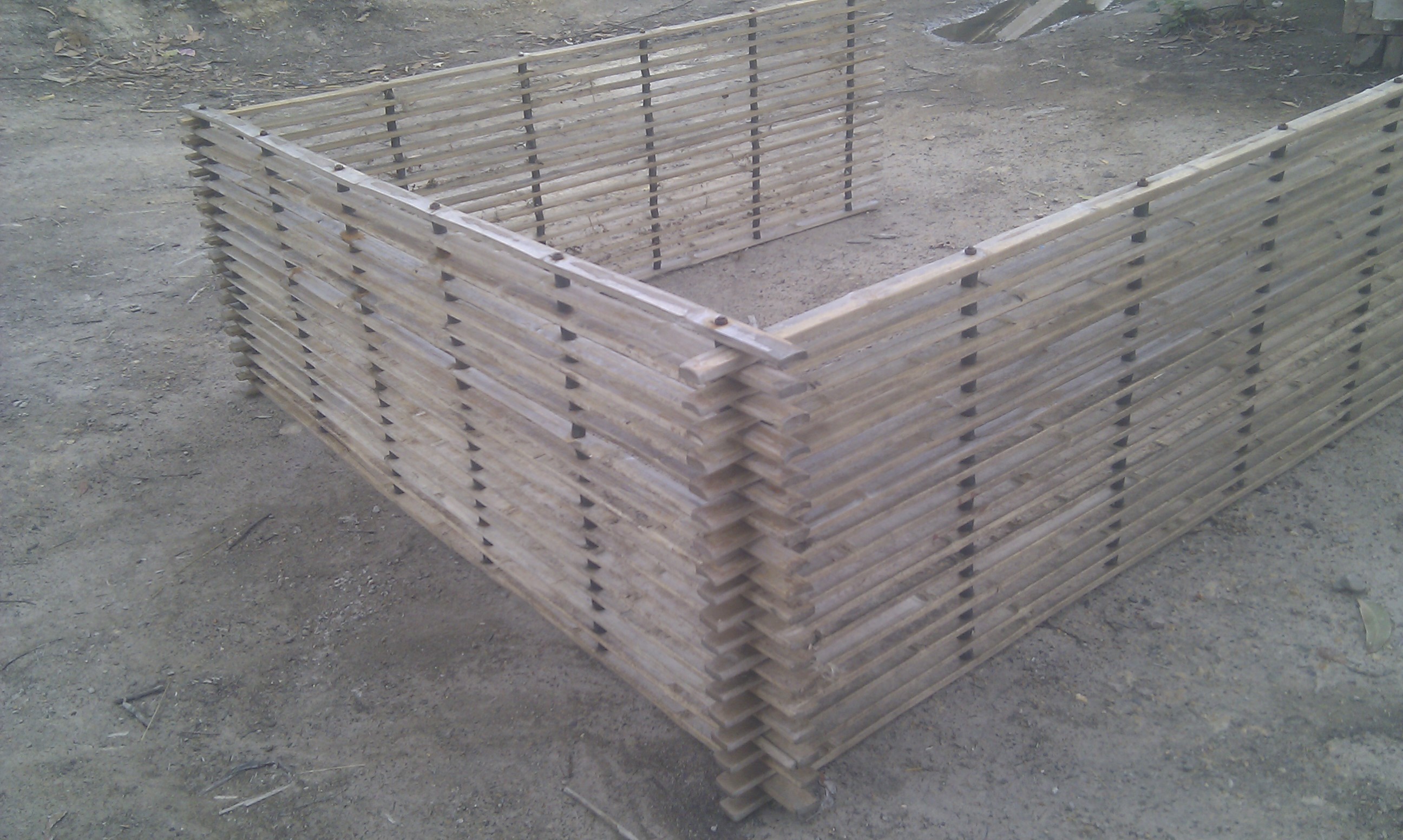
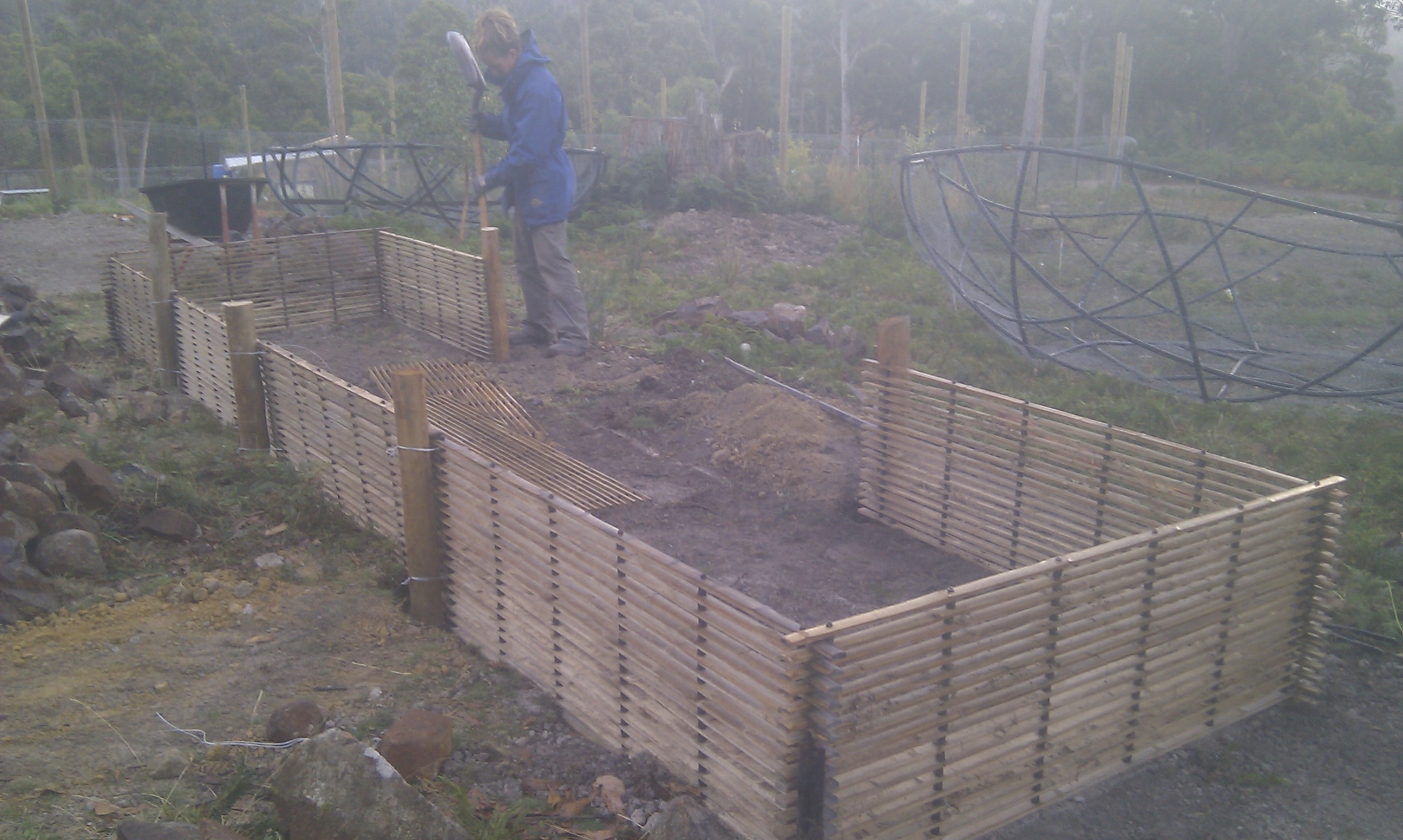
Step 3
We put a thin layer of sand on the bottom of the wicking bed to prevent sharp objects from penetrating the liner and made sure it was level.
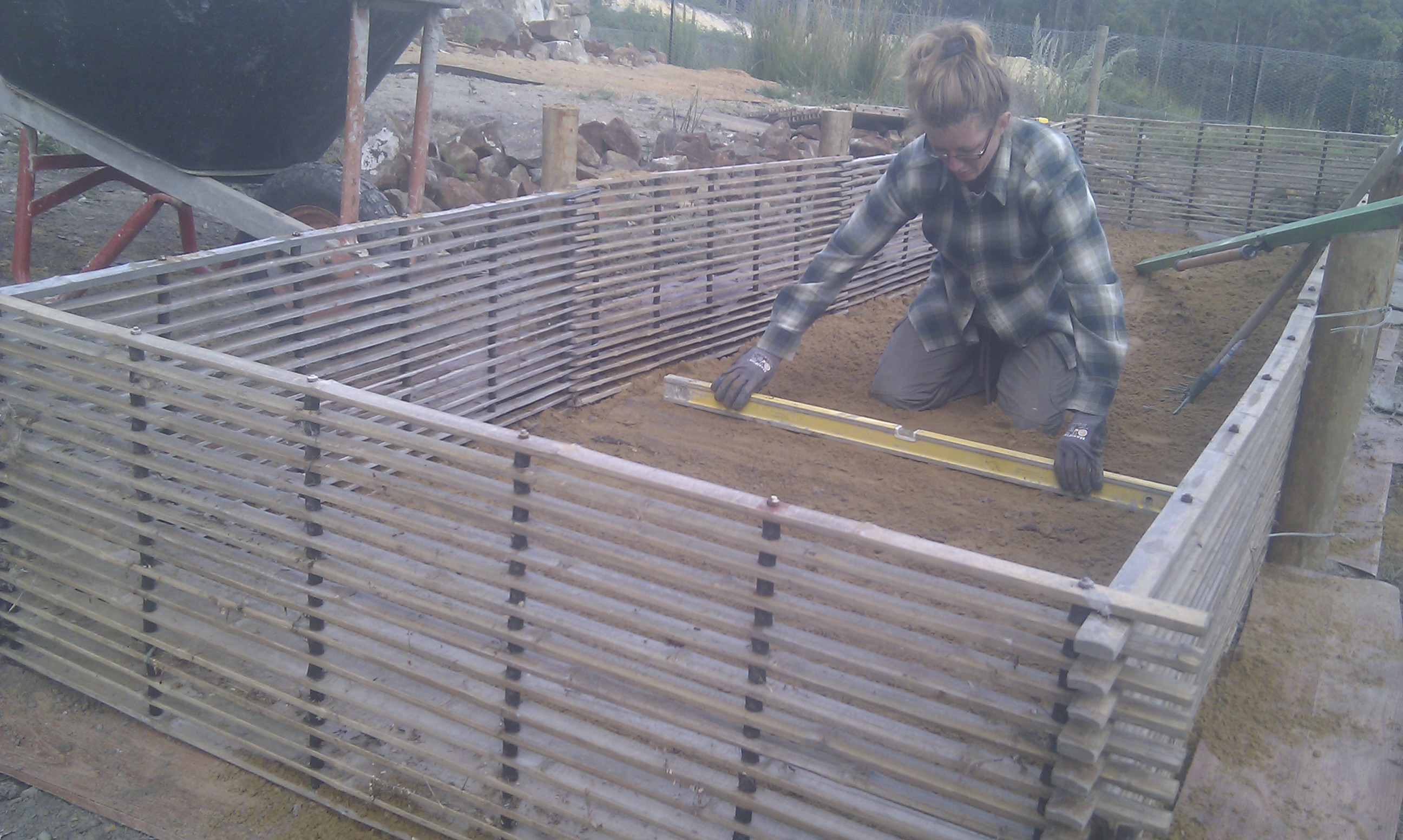
Step 4
Next, we laid 2 layers of builder’s plastic in the wicking bed as our liner.
Step 5
Carefully, we filled the lower half of the wicking bed with gravel, shovelling it in gently so as not to puncture the liner.
Step 6
We took a 100mm polypipe and drilled holes along its length. We attached a 90°joiner at one end of the pipe and fitted another length of polypipe into this to give us a standpipe in which to water.
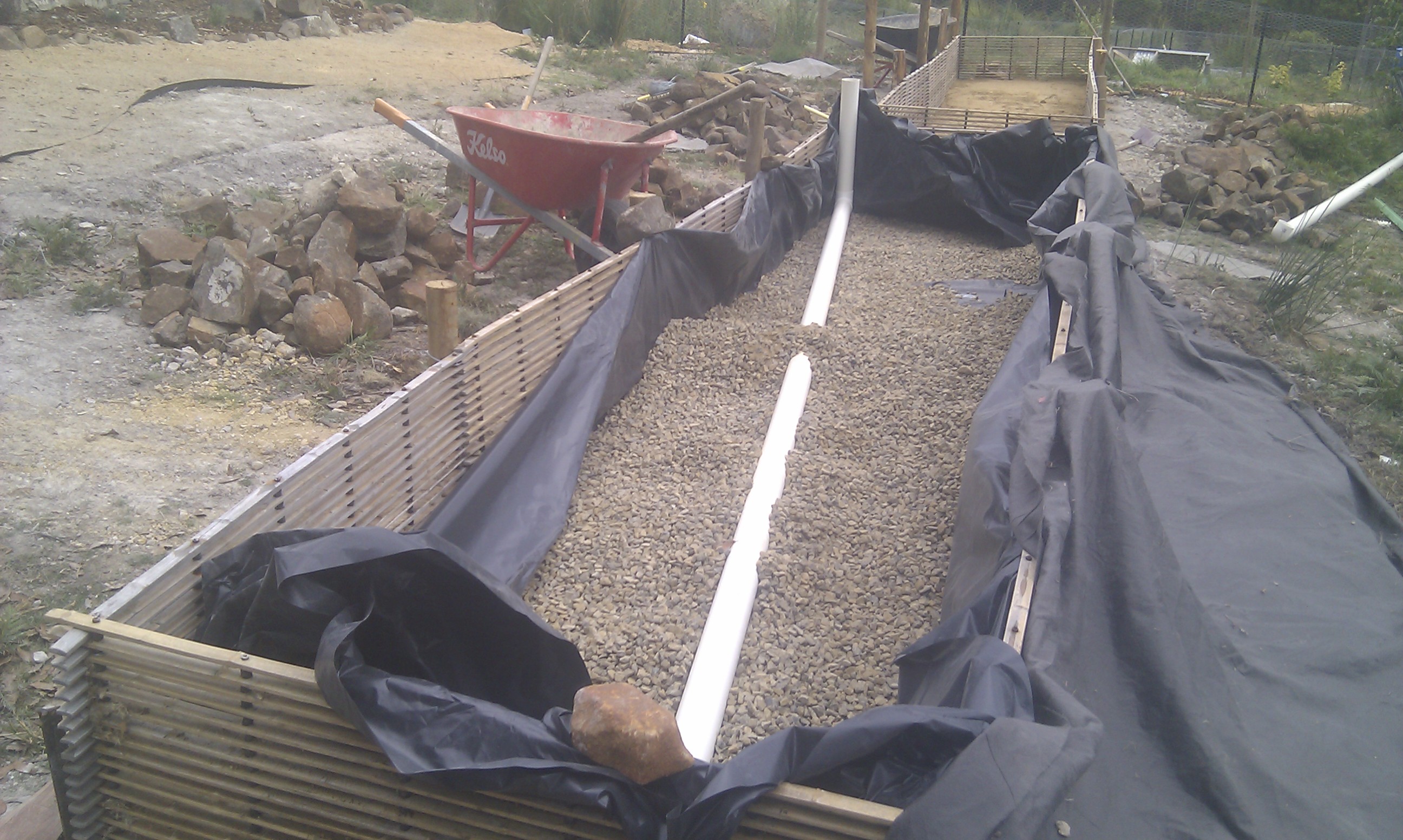
Step 7
We punctured the builder’s plastic at one end halfway up the bed to act as the overflow outlet (we actually put pipe in the puncture, but not sure it was necessary). Then we put geofabric on top of the gravel to separate it from the soil and filled the upper half of the bed with soil. All that remained to do was to water the bed. We filled the wicking bed until water leaked out of the overflow pipes, and then the bed was ready to plant.
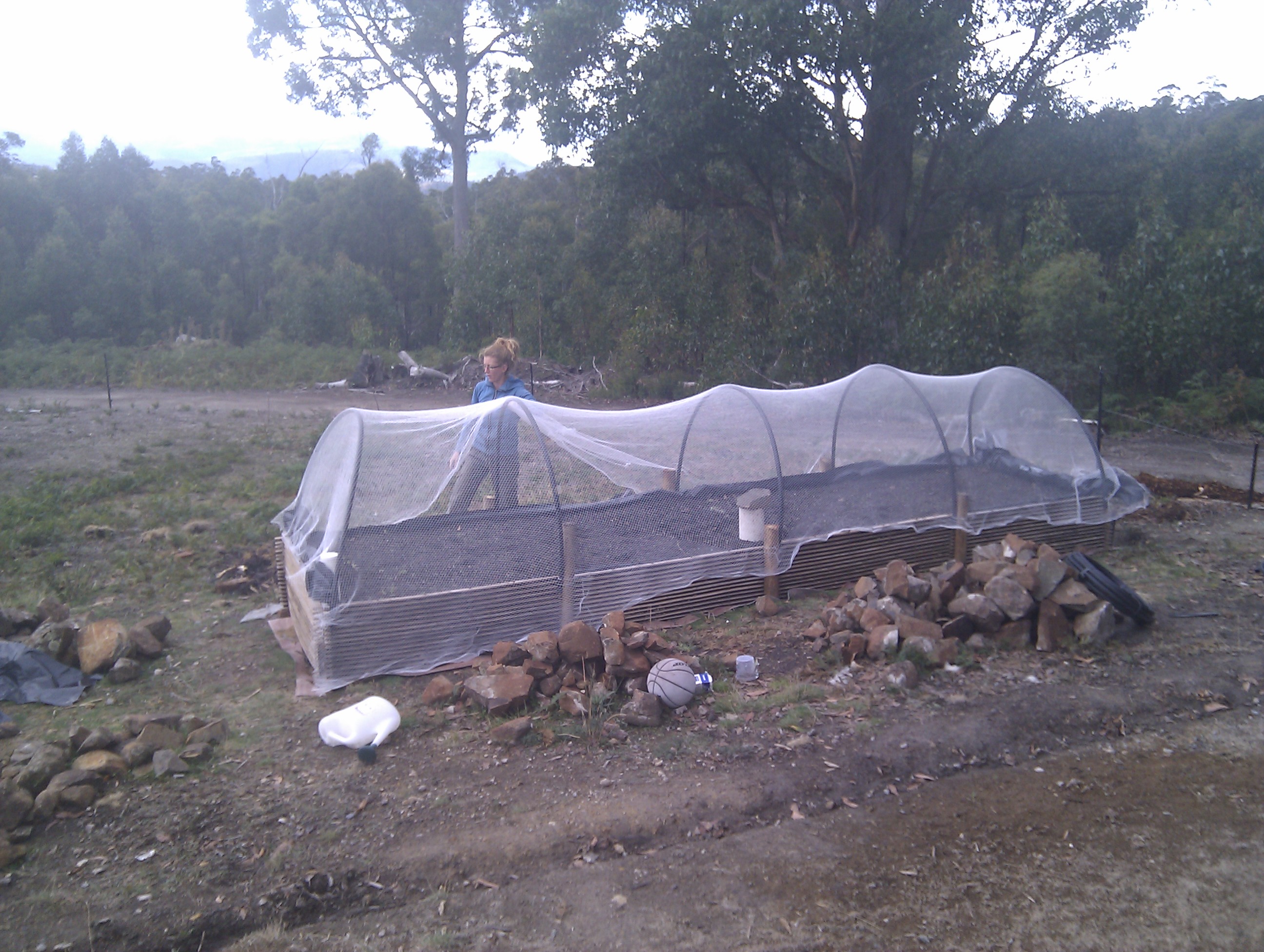
We built the wicking beds to save water, but we still didn’t really have enough water to fill them as often as they required. In fact, after the first couple of times, we didn’t fill the beds at all. Despite this, we have had success with them even just relying on rainfall during winter and spring, with generous crops of garlic, snowpeas, and sugarsnap peas every year without watering. That’s good, but not really a prime example of a successful food garden. We just didn’t have enough water to give anything less hardy a chance.
Recently, we bought a water tank to be used exclusively for the garden, so we decided to re-visit the wicking beds and see whether they really were worth the time and effort which went into making them. I used a soil moisture meter so that I could see the difference filling the wicking beds makes.
It makes a lot of difference. I watered once a week all through summer. New seedlings needed to be surface-watered until their roots grew deep enough to benefit from the water wicking up from the reservoir, but other than that, the beds were very low maintenance. And for the first time in 5 years, we were growing lettuces and silverbeet and kale and Chinese cabbage and other water-hungry plants.
The vegetables grew so successfully that our chickens regularly escaped their enclosures to feast on the netted plants. At least we get the greens secondhand in their eggs.
Zucchinis as long as my forearm
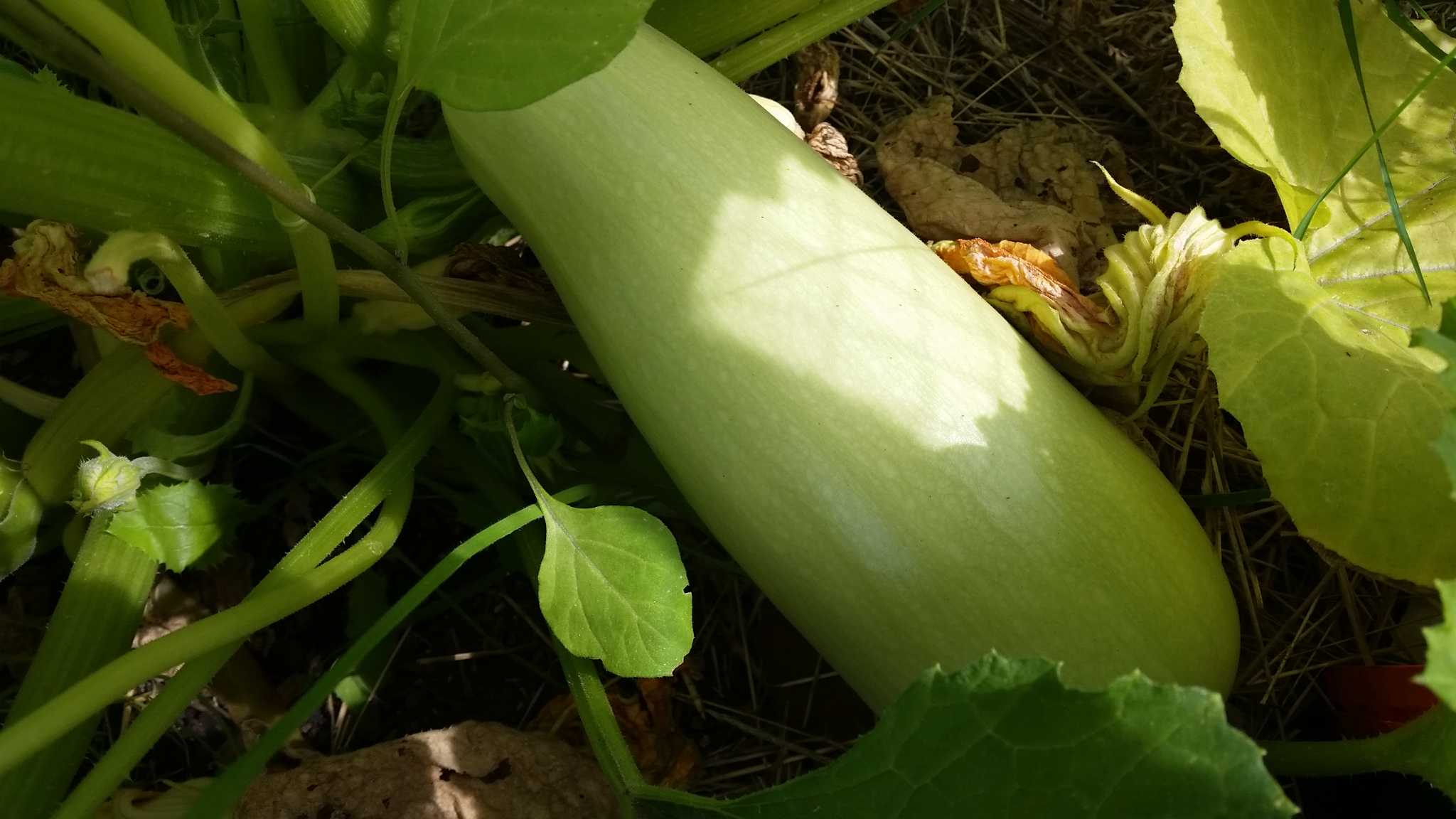
parsley that the chickens haven’t demolished yet
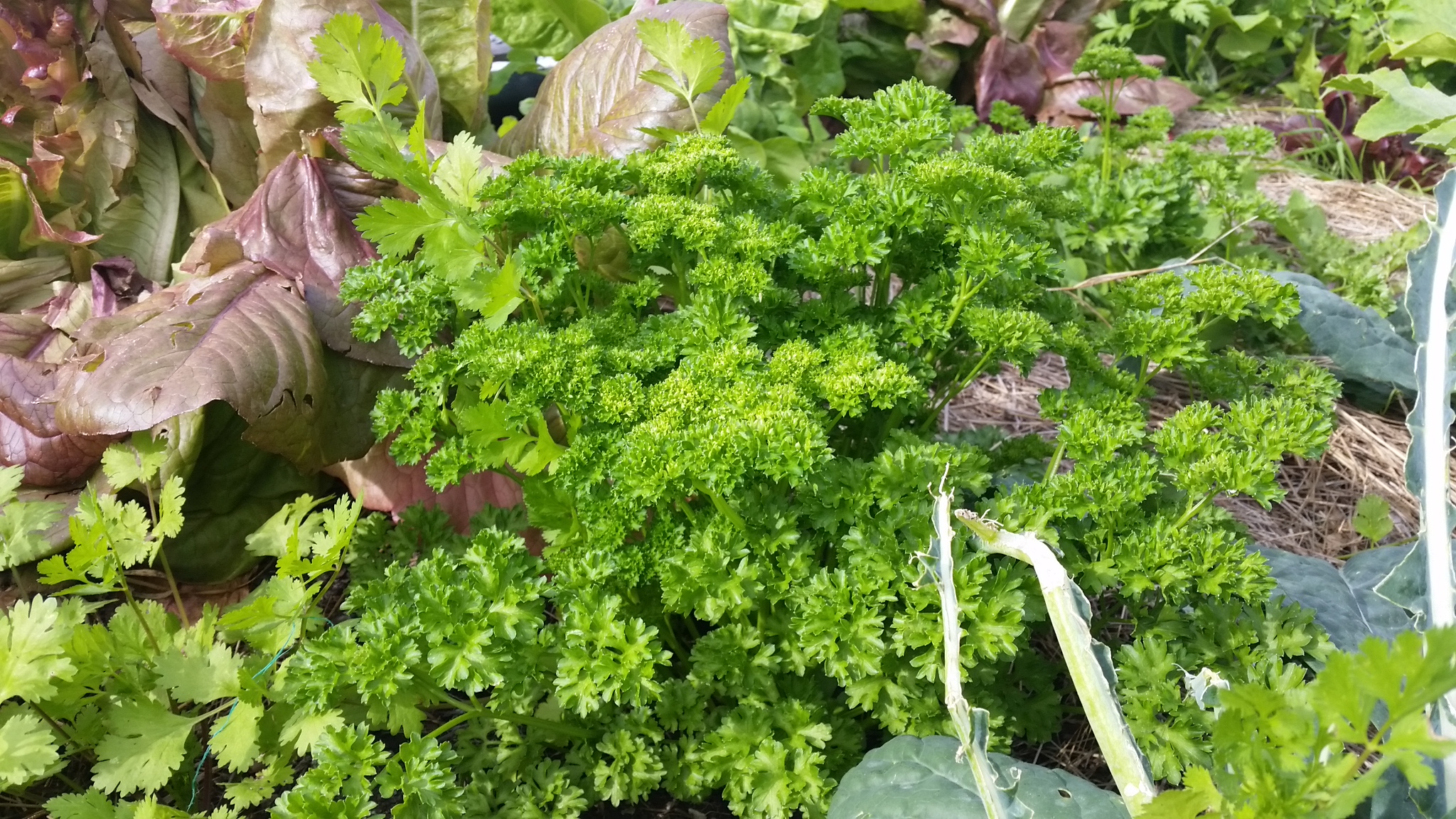
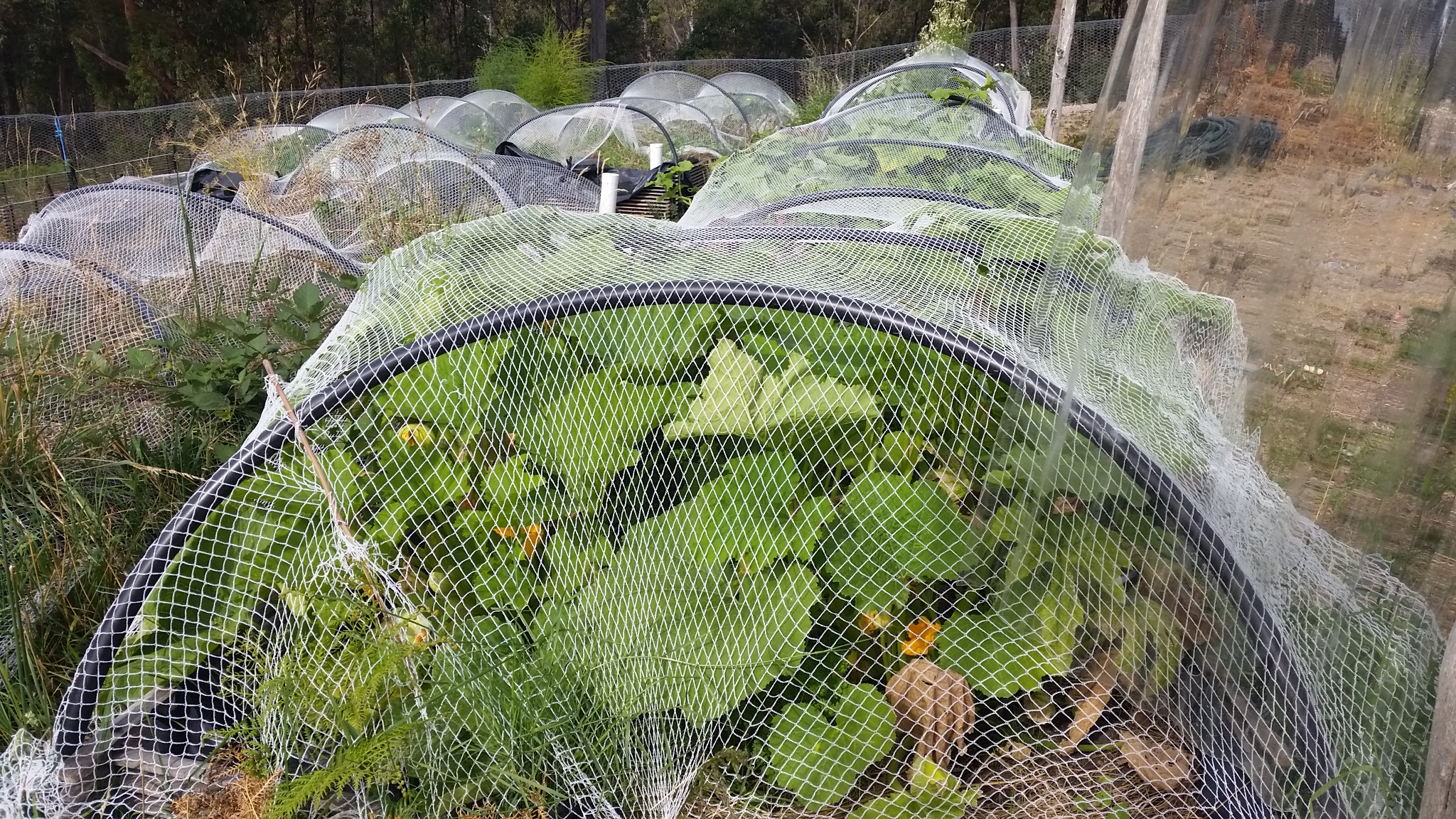
What We Would Change
- The slatted bamboo was a mistake. Weeds grow between it and liner, and pulling the weeds out risks tearing the liner. Next time we may try corrugated iron.
- I think the beds are actually too deep. We wanted them waist-high for easy gardening, but that meant a lot of gravel and soil that probably wasn’t needed. Next time, the beds will be in-ground or low to the ground and shallower. Good for our squatting practice!
- Our biggest problem is protecting the vegetables from wildlife and our chickens! The gardens are covered in bird netting, and while this has given them some protection, it is more of a hassle to weed and to pick the vegies. Next time, we will ABSOLUTELY be building our wicking beds in a cage.
The Verdict
We spent a lot of time building 5 of these wicking beds. Five years down the track, only 3 still hold water; the other two must have punctured liners; it could have been from the gravel in the beds, or we may have disturbed the liners when vigorously removing weeds from around the beds. However, our recent successful experience with the still-functioning wicking beds has convinced us beyond a shadow of a doubt that it is worth the extra effort to build the beds. We will definitely be making more, closer to the main house, within a cage. Yay for wicking beds!

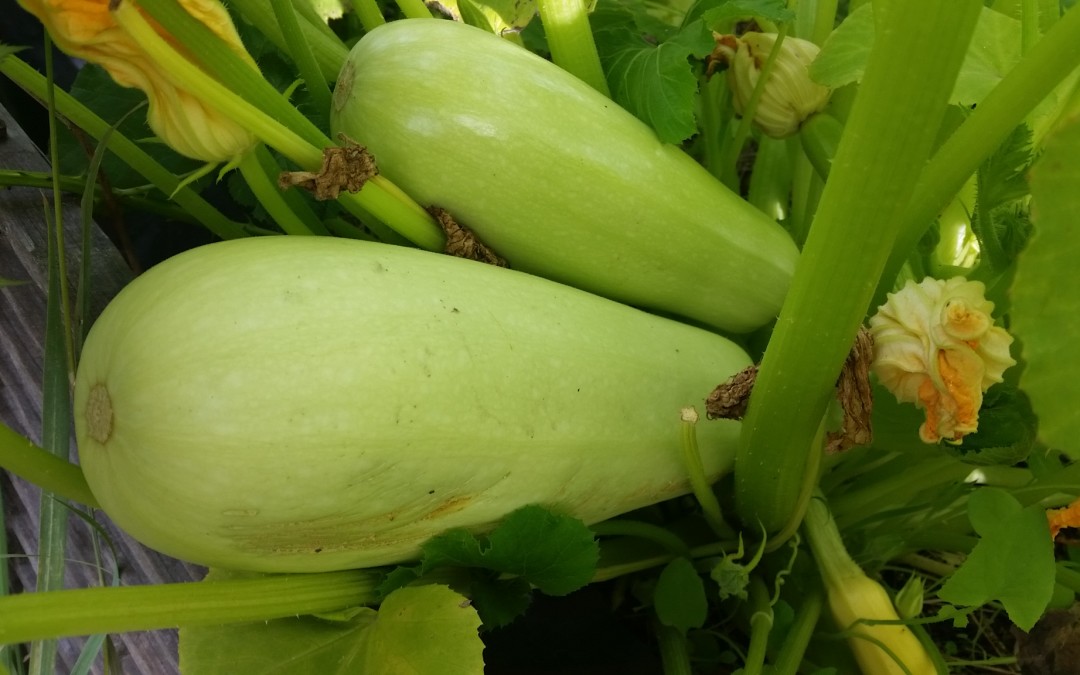
Looking forward to reading more. Great forum. Cool. Parvis
Thanks, William! ?